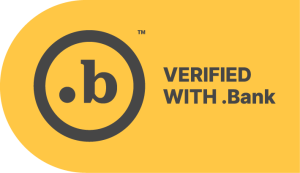The internet is a quick and easy way to get a lot of information, communicate with others and stream or download your favorite media. Tasks such as online bill payment and instantly checking your bank account have never been more convenient.
Unfortunately, the internet has also created an easy route for hackers and thieves to access personal and financial information. Identity theft is a problem that has persisted as technology has evolved.
In 2018, 14.4 million consumers in the United States were victims of identity fraud, costing these individuals $1.7 billion in out-of-pocket costs.
Antivirus and identity theft detection software has gotten more sophisticated with time and helped to alleviate many problems. Still, hackers also find new ways to try to steal your personal information.
As an internet user, you need to be aware of the best ways to keep your information private and secure. While there is no sure way to prevent identity theft, we can provide you with a few tips to make it more difficult for the bad guys to get your information.
What is Identity Theft?
Before diving into the ways to protect yourself from identity theft, you need to know what ID theft is and how it can be harmful to your financial and personal reputation.
Identity theft is when someone steals your personal information to commit fraud. ID theft is achieved with stolen physical documents, through phone scams or digitally through your computer or smartphone. It can ruin your credit score, make it difficult for you to secure a loan and dry up your financial resources.
What Are Common Types of Identity Theft?
There are several ways that identity thieves try to steal your personal information. It usually comes through getting your info via financial documents, like bank statements or credit offers, over the phone or through an internet scam.
Physical Identity Theft
This is the longest standing type of ID theft. Some records go back into the 1800s with voting fraud to try to get a favored politician elected. Today, physical identity theft can still happen. Scammers can:
- Steal your driver’s license, social security card, passport, credit card or other valid ID from your wallet.
- Steal mail from your mailbox.
- Fill out a credit application addressed to you.
- Dig old bank statements out of the trash.
Digital Identity Theft
Digital identity theft is an easy way for a hacker to get your information. It comes in many forms, and, many times, can seem legitimate.
Phone Scams
A fraudster can conduct a phone scam live or utilizing an automated system called a “robocall.” These scammers may say you’ve won a free sum of money or a trip, while others will say they are calling you on behalf of a credit card you don’t own or a loan you didn’t receive. You can report these at the online Federal Trade Commission complaint assistant.
Phishing Scams
Phishing is a way identity thieves try to lure you into giving away personal information online. Scammers set up phishing schemes through emails or websites that ask for financial information like a credit card or bank account number.
- Emails from phishers will usually claim to be urgent and ask for an immediate response.
- Remember, a reputable financial institution with account security won’t ask for personal info over the internet or the phone, unsolicited.
Malicious Computer Software
Malware is software that hackers use to steal your information or wreak havoc to your computer and save data. Some of the most common types of malware include:
- Viruses– This is the most commonly known type of malware. Viruses can enter your computer via an email attachment, during file downloads from the internet or when you visit a contaminated website. They are a type of code that replicate themselves in your computer and then infect files, making them unusable.
- Worms– Worms are like viruses in that they replicate themselves and infect files. The difference is that worms don’t require any activation. They begin working independently as soon as they’ve breached your computer system.
- Trojans- Trojan malware usually comes to you in the form of an email and pushes you to click a link or download software.
- Spyware- Spyware is malware that the victim accidentally downloads from the internet with other files that look like they are legitimate. These programs are especially dangerous because there may not be any noticeable effects. Spyware can see what sites you visit and take personal information like bank account info and credit card numbers or passwords to online accounts.
- Ransomware- This type of malware can encrypt and lock up your files once it has access to your computer. The hacker will then ask for money via Bitcoin or other untraceable currency to get your data back or to keep them from exposing it online.
Identity Theft Prevention
While there are a lot of ways hackers can try to steal your information, you can combat their efforts to take your data.
- If an email looks suspicious, don’t respond or open it:
- Avoid emails from addresses you don’t know or that don’t seem legitimate. Phony emails are one of the primary ways hackers try to put malware on your computer. The same goes for website downloads. Only download software from legitimate sites.
- Shred all financial documents and credit applications:
- ID thieves don’t have boundaries when it comes to stealing your personal information. A credit card application, receipt or bank statement in the trash is a quick way someone can take your personal information. If you have access at home, run these items through a shredder. If not, keep them in a box or folder to shred at work.
- Don’t carry valuable personal documents on you at all times:
- Items like your social security card and passport can make it easy for criminals to steal your information. Only carry those documents with you when necessary. When you aren’t using them, keep them secured in a lockbox or other safe storage area.
- Only pay on secure websites:
- When purchasing something online, look at the address: secure websites will begin with “https,” rather than “http.” The “s” indicates that the site has an SSL certificate.
- Use a virtual private network (VPN) when on public wifi:
- Public wifi is excellent for work or recreation at your local coffee shop or an airport. However, whenever you are on a public wifi network, your data is usually not encrypted or secured, leaving information exchanged between you and the website server open to interception. A virtual private network can encrypt data sent over a wifi connection, making it secure.
- Create strong passwords for any online accounts:
- Fraudsters and hackers can guess simple passwords to gain access to payment information. A strong password usually requires upper and lowercase characters, numbers and special characters. Using two or more words can make it harder to guess.
- Install an antivirus program on your computer:
- Antivirus programs are an easy way to detect any malicious software that is downloaded onto your computer. Many reputable companies offer free antivirus software that can scan for any malware and alert you of any problems it may detect.
- Bank with a financial institution that takes security seriously:
- Your bank or credit union should offer a secure means to check your account. If you see unauthorized charges, you can notify your bank to freeze your account. Your bank won’t call or email you asking for your account information unsolicited.
Are you looking for a bank that will protect your information and help keep your finances secure? Contact Community Point Bank today to see how we can help you bank smarter and safer.
Want more banking tips and information? Visit the Community Point Bank blog for other financial content.




